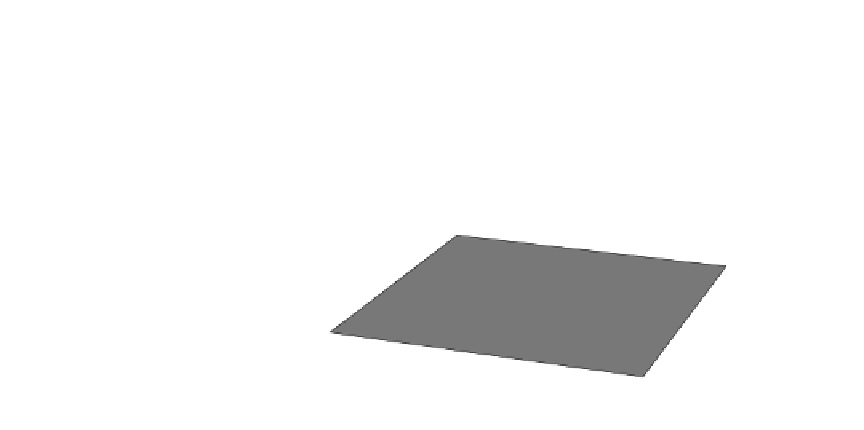Environmental Engineering Reference
In-Depth Information
Fig. 4.21
Percentage of
stored carbon in major
seagrass species from Gulf
of Kutch during 2012
34
Premonsoon, 2012
Monsoon, 2012
Postmonsoon, 2012
33.5
33
32.5
32
31.5
31
30.5
30
Postmonsoon, 2012
29.5
Monsoon, 2012
29
Premonsoon, 2012
Halophila
ovalis
Halophila
beccari
Zostera
marina
postulated that the exogenous form of carbon
assimilated by seagrasses is HCO
3
−
. This may be
attributed to extremely low concentration of car-
bon dioxide in seawater compared with HCO
3
−
(about 200 times less) and the slow rate at which
carbon dioxide could be resupplied to the plant
from other forms of carbon. The complete
dependency of few seagrass species on HCO
3
−
was demonstrated by Beer et al. (
1977
). These
species are
show that
is a C
4
plant. In
1979, Beer and Waisel conducted short-time
Thalassia testudinurn
14
C
δ
pulse
chase experiments on two other seagrass
species. Both species show a typical C
3
pattern
with phosphoglyceric acid being the
-
rst major
stable substance labelled. The label is subse-
quently transferred to phosphorylated sugars and
phosphate esters and later to saccharose or aspartic
acid. Although saccharose and aspartic acid were
not separated in the scraping and counting of the
chromatograms,
Halophila stipulacea
,
Thalassoden-
dron ciliatum
,
Halodule uninervis
and
Syringo-
two distinct spots could be
dium isoetifolium
. It is of interest whether seagrass
species belong to the C
3
or C
4
group of plants
because many species are tropical and hence
exposed to high temperatures, especially in shal-
low water. This is one of the conditions which
might have contributed to the evolution of C
4
plants. While certain features such as the
identi
lm, the saccharose spot
usually of higher density than the aspartic acid. In
any case, neither malic nor aspartic acids were
primary products of
ed on the X-ray
14
C
xation showing that
these seagrass species are not C
4
plants. Although
14
C pulse
chase experiments should ideally result
in the same total activity of label in all treatments,
the relative activity of
-
13
C
values measured by Parker (
1964
), Smith and
Epstein (
1971
), Doohan and Newcomb (
1976
)
and Benedict and Scott (
1976
) suggest that vari-
ous seagrass species belong to the C
4
type, other
features such as the high rates of photorespiration
(Hough
1976
) and photosynthetic inhibition by
high oxygen concentrations (Downton et al.
1976
)
are typically associated with the C
3
pathway.
Results of a more appropriate test for the deter-
mination of C
3
or C
4
photosynthesis, i.e., short-
time
δ
xed
14
C increased with
increasing chase times. This is due to absorption
of H
14
CO
3
−
which continues to be metabolized
after the plant has been transferred to a
4C-free
medium. Therefore, phosphoglyceric acid levels
in 15- and 45-s chase periods are somewhat
overestimated, while main labelled products are
underestimated. The regain of spotted
*
4C
activity was about 60 %, including the activity of
the whole plates. Some activity was lost to the
running solvent in the tank, and about 10 % was
lost as an evenly distributed smear over the whole
*
14
C experiments, have been reported pre-
viously only by Benedict and Scott (
1976
). They
δ








































